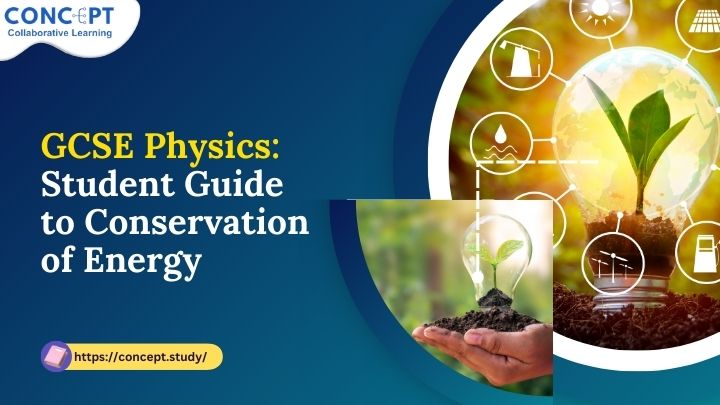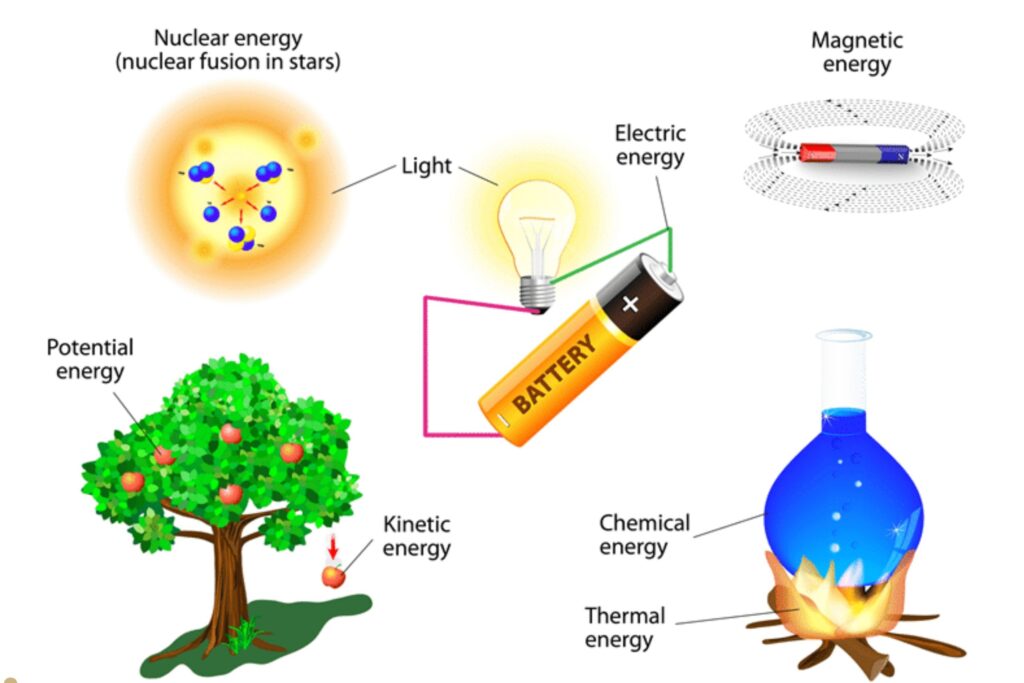
GCSE Physics: Student Guide to Conservation of Energy
Introduction to Conservation of Energy
When it comes to smashing your GCSE Physics exam, understanding the conservation of energy is essential. Not only is it a foundation for many other topics, but it’s also a concept that applies to almost everything around us. Whether you’re heating up your dinner or cycling uphill, energy’s always at play – and it’s never lost or gained, only transferred or transformed.
Why Energy Matters in the Real World
Energy isn’t just a classroom concept; it powers every corner of our lives.
Everyday Examples of Energy Transfer
- Boiling a kettle – Electrical energy turns into thermal energy.
- Riding a bike – Chemical energy in your muscles becomes kinetic.
- Using a mobile phone – Battery (chemical) energy becomes light and sound.
Understanding how energy moves, changes, and behaves gives you the tools to answer real-world GCSE problems and boosts your scientific literacy overall. What is a Sentence?
The Law of Conservation of Energy Explained
This is your golden rule: “Energy cannot be created or destroyed – only transferred or transformed.”
Key Definitions and Terminology
- Energy Store: A place where energy is kept (e.g. chemical, kinetic).
- Transfer Mechanism: The way energy moves (e.g. heating, electrical).
- System: The part of the universe being studied.
Simple Breakdown of the Law
If you start with 100 joules of energy, that total amount must still exist after a change. It might spread out, change form, or become less useful, but it’s still there. What is Differentiation?
Types of Energy You Need to Know
There are 8 key types of energy you’ll need to remember for your exam.
Kinetic and Potential Energy
- Kinetic Energy: Energy of movement.
- Gravitational Potential: Stored energy in objects above the ground.
- Elastic Potential: Stored energy in stretched/compressed objects.

Thermal, Chemical, Electrical and More
- Thermal Energy: Heat energy in particles.
- Chemical Energy: Stored in fuels and foods.
- Electrical Energy: Moving charges.
- Nuclear Energy: Energy from atomic nuclei.
- Magnetic Energy: Stored when magnetic poles interact.
Energy Stores and Transfers
Energy moves between stores using heating, radiation, and mechanical work. Explore Concept.Study – GCSE Physics Classes
Mechanisms of Transfer
- Conduction – Heat through solids.
- Convection – Heat via moving liquids or gases.
- Radiation – Heat transferred via electromagnetic waves.
Diagrams That Help You Understand
Diagrams like flow charts and energy chains show how energy enters and exits a system. These are perfect for visual learners and often appear in GCSE papers.
Calculating Energy Changes – Formulae You Must Remember
Gravitational Potential Energy
GPE = mass × gravitational field strength × height
(GPE = mgh)
Kinetic Energy
KE = 0.5 × mass × speed²
(KE = ½mv²)
Elastic Potential Energy
EPE = 0.5 × spring constant × extension²
(E = ½ke²)
Learn to rearrange these formulas too – it often comes up in exams!
Power and Efficiency in Physics
What is Power in Physics Terms?
Power is the rate at which energy is transferred.
Power = Energy transferred ÷ Time
Units? Watts (W).
Calculating Efficiency with Examples
Efficiency = Useful energy output ÷ Total energy input × 100
Example:
If 200J goes in, but only 80J is useful:
Efficiency = (80 ÷ 200) × 100 = 40%
Conservation of Energy in Closed Systems
A closed system is one where no energy enters or leaves – it’s all kept inside. Energy shifts between stores, but the total energy remains constant.
- A pendulum in a vacuum.
- A rollercoaster (ignoring air resistance).
Understanding these helps explain why some objects keep moving or stop eventually.
Conclusion
Once you’ve grasped the basics of energy types and how they are stored, transferred, and conserved, the rest of GCSE Physics becomes much easier to handle. It’s all connected. Use real-world examples, revise the formulas regularly, and practise exam-style questions to build confidence. Enrol for Online Tutoring UK
FAQs About Conservation of Energy
1. What is the basic idea behind the conservation of energy?
Energy cannot be created or destroyed – it just changes from one form to another.
2. Why is some energy always ‘wasted’?
Due to inefficiencies, like heat loss from friction or resistance, some energy always becomes less useful.
3. What is the unit of energy?
The joule (J).
4. Is light an energy store or transfer?
Transfer. Light moves energy between stores (like electrical to thermal).
5. How do you calculate efficiency if you’re only given power?
Use: Efficiency = Useful power output ÷ Total power input × 100
6. What’s the difference between open and closed systems?
In closed systems, total energy stays the same. In open systems, energy can enter or leave.
